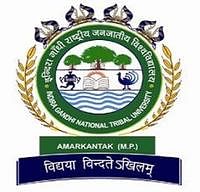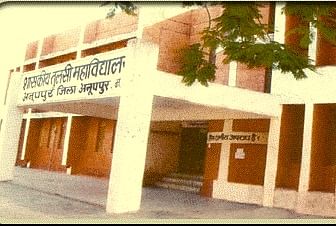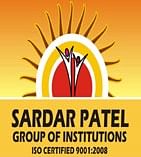MPBSE Class 10 Chemistry Latest Syllabus 2025-26: Download Latest and Revised MPBSE Class 10th Chemistry Syllabus PDF
Table of Contents
- MPBSE Class 10th Chemistry Syllabus
- MPBSE Class 10th Chemistry Syllabus PDF Download
- How to Download MPBSE Class 10th Chemistry Syllabus
- Important Topics for MPBSE Class 10th Chemistry Syllabus
- Best Books for MPBSE Class 10th Chemistry Syllabus
- Preparation Tips for MPBSE Class 10th Chemistry Syllabus
The Madhya Pradesh Board of Secondary Education (MPBSE) has carefully structured the class 10th chemistry syllabus to provide students with a comprehensive understanding of fundamental physical concepts and their real-life applications. The syllabus covers essential topics such as electricity, magnetism, light, work, energy, and sources of energy, aiming to build both conceptual clarity and practical knowledge. By focusing on the laws of motion, reflection and refraction, and electromagnetic effects, the syllabus prepares students for advanced studies in science and related fields like engineering and technology.
In addition to theoretical knowledge, the MPBSE Physics syllabus places significant emphasis on practical applications, enabling students to connect scientific principles with everyday phenomena. Students are assessed through a combination of theoretical exams and practical evaluations, ensuring a balanced understanding of the subject. This syllabus also equips students for competitive exams such as NTSE and scholarships, laying a strong foundation for further education. The official syllabus can be accessed through the MPBSE website or trusted educational platforms for detailed updates and study planning.
Also Read: MPBSE Class 10th Exam 2026
MPBSE Class 10th Chemistry Syllabus
The Chemistry syllabus is part of the overall Science syllabus. Below is a chapter-wise breakdown of the Chemistry portion of the syllabus:
| Unit | Chapter Name | Topics Included |
| Unit I: Chemical Substances | 1. Chemical Reactions and Equations | Types of chemical reactions (combination, decomposition, displacement, and redox reactions), balancing chemical equations, applications of reactions. |
| 2. Acids, Bases, and Salts | Properties of acids and bases, reactions of acids and bases, preparation and uses of salts, pH scale, and its importance in daily life. | |
| 3. Metals and Non-metals | Physical and chemical properties of metals and non-metals, reactions, uses, corrosion and its prevention, metallurgy. | |
| 4. Carbon and its Compounds | Covalent bonding in carbon compounds, properties of carbon, hydrocarbons, functional groups, nomenclature, and isomerism. | |
| Unit II: Periodic Classification | 5. Periodic Classification of Elements | Mendeleev’s periodic table, modern periodic law, trends in the modern periodic table (atomic size, ionization energy, electron affinity). |
This table provides a clear and structured outline of the key chapters and topics covered under the MPBSE Class 10 Chemistry syllabus.
MPBSE Class 10th Chemistry Syllabus PDF Download
Candidates can download the MPBSE Class 10th Chemistry syllabus in PDF format for easy access and offline reference. The PDF includes a detailed breakdown of all chapters and topics, helping students plan their preparation effectively.
Websites to Download the MPBSE Class 10th Chemistry Syllabus
Students can download the syllabus from the following reliable platforms:
- MPBSE Official Website (mpbse.nic.in): The official MPBSE portal for downloading the Class 10 syllabus, including Chemistry.
- GetMyUni (getmyuni.com): Provides access to the MPBSE syllabus for Class 10 along with exam tips and study guides.
Also Read: MP board 10th syllabus
How to Download MPBSE Class 10th Chemistry Syllabus
Students can download the MPBSE Class 10th Chemistry syllabus from several trusted sources. Here’s a list of websites where it can be accessed, along with simple steps to download it directly from the official MPBSE website.
Steps to Download from the Official MPBSE Website:
- Visit the MPBSE Official Website: Go to mpbse.nic.in.
- Locate the "Academics" Section: Find the syllabus link under the Academics or Student section.
- Select Class 10 and Chemistry: Choose "Class 10" and download the syllabus for Chemistry.
- Download the PDF: Save the syllabus for reference and study planning.
Important Topics for MPBSE Class 10th Chemistry Syllabus
The Chemistry paper for MPBSE Class 10 is divided into four sections: History, Geography, Political Science, and Economics. Each section has important topics that are likely to carry significant weight in the exam.
Below are the key topics for each subject in Chemistry:
Unit I: Chemical Substances - Nature and Behavior (70%)
- Key Chapters: Chemical Reactions and Equations, Acids, Bases, and Salts, Metals and Non-metals.
- Focus Areas: Balancing chemical equations, pH scale, reactions of metals and non-metals, corrosion, and prevention methods.
Unit II: Periodic Classification of Elements (30%)
- Key Chapter: Periodic Classification of Elements.
- Focus Areas: Trends in the periodic table, modern periodic law, atomic size, and ionization energy.
Also Read: MP Board 10th model paper 2026
Best Books for MPBSE Class 10th Chemistry Syllabus
To prepare effectively for the MPBSE Class 10 Chemistry exam, refer to these recommended books:
- NCERT Science for Class 10 – NCERT (2025-26 Edition)
- The official textbook covers all essential Chemistry chapters in detail.
Lakhmir Singh’s Science for Class 10 – Lakhmir Singh & Manjit Kaur
- A popular reference book that provides extensive explanations and additional practice questions.
Oswaal Question Bank for Science (Class 10) – Oswaal Books (2025-26 Edition)
- Contains sample papers, model test papers, and previous years’ questions for Chemistry and other Science subjects.
These books are popular choices among students and align well with the current syllabus, making them perfect for effective study!
Preparation Tips for MPBSE Class 10th Chemistry Syllabus
- Master Chemical Reactions: Focus on understanding and balancing chemical equations, along with types of reactions.
- Focus on Practical Applications: Understand the real-life importance of topics like pH, metals, non-metals, and carbon compounds.
- Practice Periodic Table Trends: Memorize periodic trends such as atomic size, ionization energy, and electron affinity.
- Use Past Papers: Solve previous years' exam papers to get familiar with the question pattern and time management.
- Regular Revisions: Revise key formulas and reaction types regularly to strengthen retention.
These focused tips will enhance your preparation for the MPBSE Class 10 Chemistry exam!



![Government Tulsi Degree College, [GTDC] Anuppur](https://media.getmyuni.com/azure/college-image/small/government-tulsi-degree-college-gtdc-anuppur.jpg)





![Balaji Institute of Technology, [BIT] Barwani](https://media.getmyuni.com/azure/college-image/small/balaji-institute-of-technology-bit-barwani.jpg)

![Renuka Institute of Management, [RIM] Barwani](https://media.getmyuni.com/azure/college-image/small/renuka-institute-of-management-rim-barwani.jpg)











